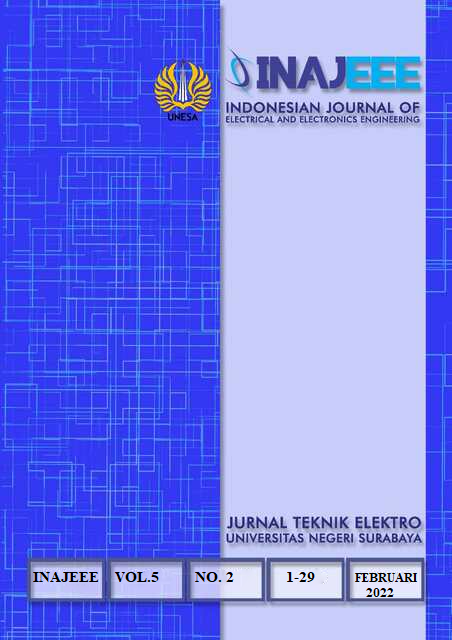Literature Review: Energy Efficiency Mechanisms using Data Reduction in Wireless Sensor Networks (WSNs) Applications
DOI:
https://doi.org/10.26740/inajeee.v5n1.p5-13Abstract
It has been stated that the implementation of Wireless Sensor Networks (WSN) has major
problems that can affect its performance. One of the problems he faced was the limited energy source (battery-powered). Therefore, in an attempt to use energy as best as possible, several mechanisms have been proposed. Energy efficiency in WSN is a very interesting issue to discuss. This problem is a challenge for researchers. This paper focuses on the discussion of how research has developed in energy efficiency efforts in the WSNs over the past 10 years. One of the proposed mechanisms is data reduction. This paper discusses data reduction divided into 4 Parts; 1) aggregation, 2) adaptive sampling, 3) compression, and 4) network coding. Data reduction is intended to reduce the amount of data sent to the sink. Data reduction approaches
can affect the accuracy of the information collected. Data reduction is used to improve latency, QoS (Quality of Service), good scalability, and reduced waiting times. This paper discusses more adaptive sampling techniques and network coding. It was concluded that using data reduction mechanisms in target detection applications proved efficient compared to without using data reduction mechanisms. To save energy, data reduction (especially with adaptive sampling algorithms) can save up to 79.33% energy.
Downloads
Published
Issue
Section
License
Copyright (c) 2022 INAJEEE (Indonesian Journal of Electrical and Electronics Engineering)

This work is licensed under a Creative Commons Attribution-NoDerivatives 4.0 International License.
 Abstract views: 380
,
Abstract views: 380
, PDF Downloads: 427
PDF Downloads: 427




